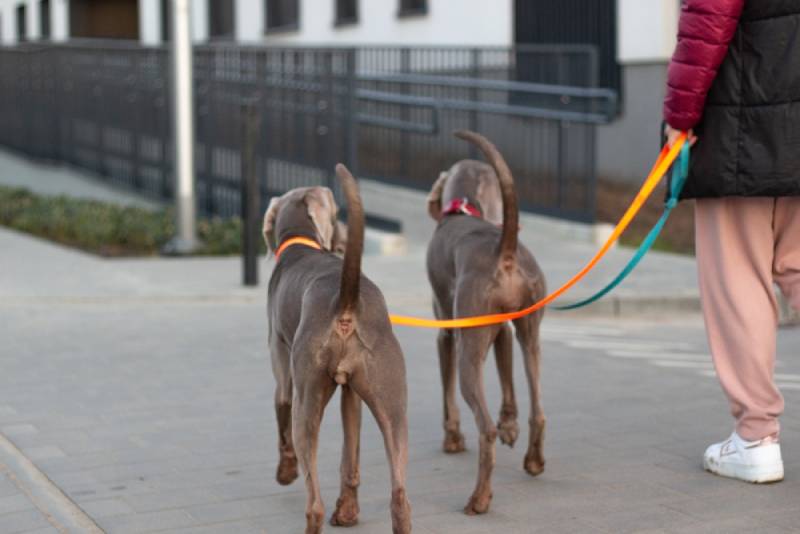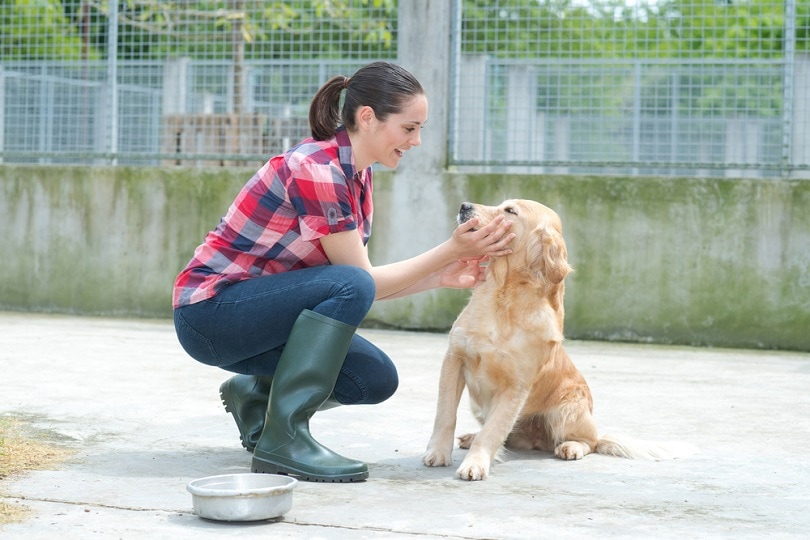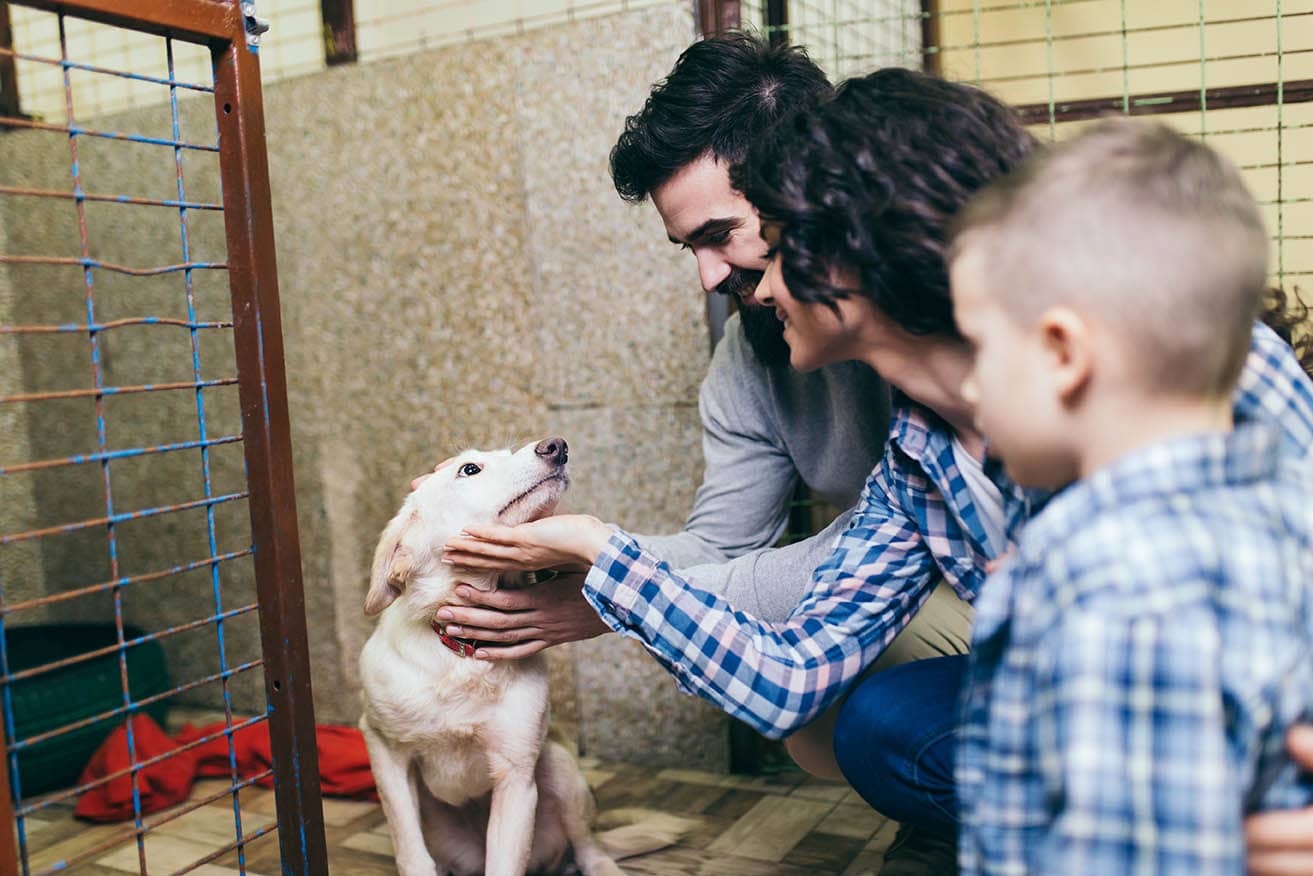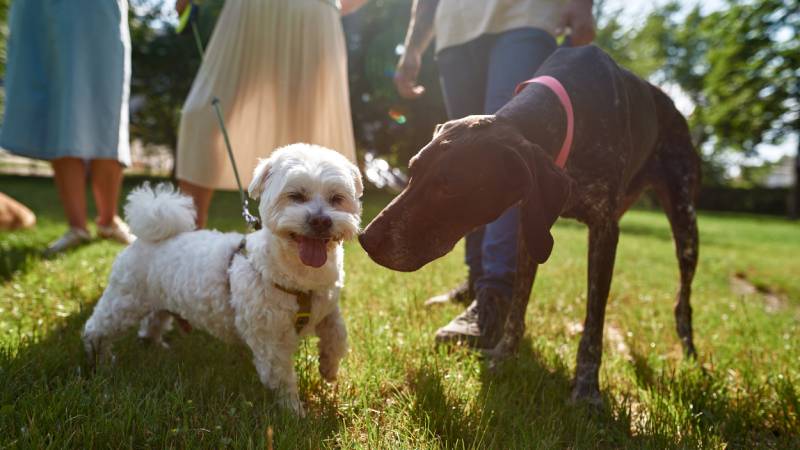Click to Skip Ahead
National Walk Your Dog Week, which takes place during the first week of October every year, is all about getting out and about with your dog to improve both their mental and physical health and yours. This may sound simple, but there are a host of reasons behind the creation of this annual event. Read on to learn more about National Walk Your Dog Week and why it’s so important.

What Is National Walk Your Dog Week?
National Walk Your Dog is the brainchild of Colleen Paige, a pet and family lifestyle expert, and was launched in 2010. Paige has expressed concern that the prevalence of sedentary lifestyles in this day and age means fewer and fewer dogs are getting the daily physical and mental exercise they need to be happy and healthy.
These concerns have been backed up by Stanley Coren Ph.D., DSc, FRSC, who explained in a 2019 Psychology Today article that, on average, around 41% of dog owners don’t walk their dogs on a regular basis1. This is a pretty startling percentage.
A lack of exercise contributes to serious physical conditions like obesity, which can branch out into other health conditions like arthritis, pancreatitis, kidney disease, and a higher risk of heart disease. Not only that, but bored, unstimulated dogs are unhappy dogs that are more prone to destructive behavior and aggression because they have too much pent-up energy and no outlet.
Bored, neglected dogs are more likely to escape from home, end up in shelters, or even face euthanasia due to behavioral issues caused by a lack of stimulation. With all this in mind, National Walk Your Dog Week was created to remind people everywhere of the importance of walking your dog regularly and how it can mentally, emotionally, socially, and physically benefit dog parents at the same time.

Benefits of Dog Walking
Recent statistics from the Association for Pet Obesity Prevention have revealed that 59% of dogs are overweight or obese2. One of the main benefits of walking your dog on a daily basis is that, along with a proper diet, it contributes to a healthier weight, and therefore a lower risk of your dog developing serious health conditions.
At the same time, daily walks can greatly benefit dog owners. Better cardiovascular health is one of the biggest physical benefits, along with stronger bones and muscles, lower blood pressure, and lower levels of stress.
Reduced stress for you also means reduced stress for your dog. Dogs aren’t supposed to live sedentary lives; they must be active every day to be happy. When dogs get enough exercise, they feel more relaxed and are less likely to resort to destructive, stress-driven behaviors like chewing furniture, barking excessively, whining, and going to the bathroom inside the house.
If you don’t walk your dog regularly and have noticed destructive or attention-seeking behaviors, you may soon notice a significant difference simply by walking your dog for at least 30 minutes per day (which is also the national heart health recommendation).
Finally, dog walking is great for socializing and improving emotional health: meeting other dogs or even just having a quick chat with other dog parents at the park can do the world of good if you’re feeling down or lonely.
How Long Should I Walk My Dog For?
There’s no cast-iron answer to this question because different dogs have different needs. While some dogs only need around 30 minutes per day, others have higher energy levels and need up to 2 hours.
It all depends on the type of dog you have, their age (as they’re still developing, puppies do better with short walks that gradually build up in length as they get older), and their personal boundaries. When you get to know your dog, you’ll soon tune in to how much exercise is just enough and how much is too much.
You don’t have to fulfill all your dog’s exercise needs in one go. You can split their daily walks into a few shorter walks instead of going for one, big, long walk. For example, a dog that needs around an hour of exercise per day could be walked twice per day for 30 minutes at a time, or three times per day for 20 minutes at a time.
If this is a really big step for you and you’re nervous about starting out, you can try taking short practice walks around the block at first, lasting around 10 minutes at a time. Start out in quiet, low-traffic areas if possible. As you get more confident, try extending each walk by a few minutes until you meet your daily goal.


Top 7 Ways to Observe National Walk Your Dog Week
1. Walk Your Dog
If your dog needs to be walked more regularly, what better time to start? Set a daily goal for walking your dog based on their needs. You could also take the opportunity to explore new locations with your dog or invite dog-loving friends to join you.

2. Get Your Dog a Check-Up
If you’re concerned about your dog’s weight or health condition, arrange a vet check-up. This is an opportunity to talk to your vet about how to improve your dog’s health and get advice on exercise and diet.
3. Spread the Word
You might want to consider spreading the word by posting about National Walk Your Dog Week on social media.

4. Take Part in a Fundraiser
Arranging a fundraising dog walk in your local area might be a good idea if that’s your thing. Otherwise, you could check out if one has already been organized and join it. The proceeds could go to organizations or shelters.
5. Volunteer
Some organizations look for volunteers to walk dogs for shelters or for people who cannot do so themselves. Consider asking local shelters or organizations if there’s anything you can do to help.

6. Donate
Shelters are always in need of donations, whether that’s a monetary donation to go towards the animals’ care or items like food and blankets. If you’d like to donate, get in touch with a local shelter to ask what they need most.
7. Consider Adopting or Fostering
If you’re not yet a dog parent but would like to be, you might want to take the plunge by adopting a lovely dog in need from a shelter. Shelters are full of dogs in need of homes and shelter personnel work very hard to care for them all. Adoption is a great way to show support and gain a new best friend. Alternatively, there’s fostering to consider.

Final Thoughts
We love that National Walk Your Dog Week works to give people the boost they need to get into a dog-walking routine and on the way to a better quality of life both for their dog and for themselves. If you’ve decided it’s time to commit to exercising your dog more, set reasonable goals for both you and your dog, and don’t hesitate to seek veterinary advice if you have any questions.
Featured Image Credit: BAZA Production, Shutterstock











